Transcription of American Finance Association
1 American Finance AssociationPrepayment and the Valuation of Mortgage-Backed SecuritiesAuthor(s): Eduardo S. Schwartz and Walter N. TorousSource: The Journal of Finance , Vol. 44, No. 2 (Jun., 1989), pp. 375-392 Published by: Blackwell Publishing for the American Finance AssociationStable URL: : 30/03/2010 20:56 Your use of the JSTOR archive indicates your acceptance of JSTOR's Terms and Conditions of Use, available JSTOR's Terms and Conditions of Use provides, in part, that unlessyou have obtained prior permission, you may not download an entire issue of a journal or multiple copies of articles, and youmay use content in the JSTOR archive only for your personal, non-commercial contact the publisher regarding any further use of this work.
2 Publisher contact information may be obtained copy of any part of a JSTOR transmission must contain the same copyright notice that appears on the screen or printedpage of such is a not-for-profit service that helps scholars, researchers, and students discover, use, and build upon a wide range ofcontent in a trusted digital archive. We use information technology and tools to increase productivity and facilitate new formsof scholarship. For more information about JSTOR, please contact Publishing and American Finance Association are collaborating with JSTOR to digitize, preserveand extend access to The Journal of JOURNAL OF Finance * VOL. XLIV, NO. 2 * JUNE 1989 Prepayment and the Valuation of Mortgage- Backed Securities EDUARDO S.
3 SCHWARTZ and WALTER N. TOROUS* ABSTRACT This paper puts forward a valuation framework for mortgage-backed securities. Rather than imposing an optimal, value-minimizing call condition, we assume that at each point in time there exists a probability of prepaying; this conditional probability depends upon the prevailing state of the economy. To implement our valuation procedure, we use maximum-likelihood techniques to estimate a prepayment function in light of recent aggregate GNMA prepayment experience. By integrating this empirical prepayment function into our valuation framework, we provide a complete model to value mortgage- backed securities. GIVEN AN OPTIMAL, VALUE-MINIMIZING call policy, a mortgage should never be called when its market value is less than its call price.
4 Similarly, a mortgage should be called if it is worth more than its call price. However, mortgagors often call their loans when the prevailing refinancing rate exceeds the contract rate on the loan (Dunn and McConnell (1981)). In addition, some mortgagors do not call their loans when the loan's contract rate exceeds the prevailing refinancing rate. The purpose of this paper is to put forward a valuation framework for mortgage- backed securities consistent with these stylized facts associated with mortgage prepayments . The mortgagor's prepayment decision is integral to our valuation framework. However, we do not impose an optimal, value-minimizing call con- dition to price these securities. Rather, we assume that at each point in time there exists a probability of prepaying, this conditional probability depending upon the prevailing state of the economy.
5 By integrating this prepayment function into our valuation framework, we provide a complete model to value mortgage-backed securities. To implement our valuation procedures, we estimate a prepayment function given recent GNMA prepayment experience. We follow Green and Shoven (1986) by using a proportional-hazards model to estimate the influence of various explanatory variables or covariates on the mortgagor's prepayment decision. Distinct from Green and Shoven, we explicitly model the effects of seasoning, as well as investigating the influence of interest cost savings from refinancing. In addition, we also consider the effects of lagged refinancing rates, heterogeneity * Both authors from Anderson Graduate School of Management, University of California, Los Angeles, We thank Michael Brennan, Richard Roll, Chester Spatt, and the editor, Rene Stulz, as well as seminar participants at Freddie Mac, the University of Alberta, UBC, the University of New Mexico, UCLA, and Wharton for helpful comments and suggestions.
6 Bruno Gerard provided excellent research assistance. 375 376 The Journal of Finance in mortgagors, and seasonality. We provide maximum-likelihood estimates of our proportional-hazards model given limited prepayment data over the period Jan- uary 1978 to November 1987 for a number of GNMA thirty-year Single-Family pools. The point of departure for our mortgage-backed security valuation model is Brennan and Schwartz's (1982, 1985) two-factor model for valuing default-free interest-dependent claims. This model assumes that all information about the term structure of interest rates can be summarized by two state variables: the instantaneous riskless rate of interest and the yield on a default-free consol bond. We add state variables underlying the posited prepayment function, thereby allowing us to integrate the prepayment function into this valuation framework, resulting in a complete model to value mortgage-backed securities.
7 Monte Carlo simulation methods are used to solve the resultant second-order partial differ- ential equation subject to the boundary and terminal conditions which charac- terize the particular mortgage-backed security. We apply our valuation procedures to the pricing of default-free, fully amortiz- ing mortgages. A majority of the mortgage loans which back GNMA securities are fully amortizing. We highlight the importance of prepayment behavior by comparing mortgage values assuming that prepayments occur according to our estimated prepayment function with mortgage values assuming an optimal, value- minimizing call policy and mortgage values assuming that prepayments occur according to FHA experience. The plan of this paper is as follows.
8 Since the mortgage prepayment function is central to our valuation procedures, Section I carefully details our proportional- hazards model. We discuss its maximum-likelihood estimation and investigate the significance of various covariates in influencing a mortgagor's prepayment decision given recent GNMA prepayment experience. Section II presents our mortgage-backed securities valuation model. We illustrate the application of the model to the valuation of default-free, fully amortizing mortgages in Section III. By integrating the estimated prepayment function into this valuation framework, we help explain a number of the stylized facts associated with the pricing of mortgages. Section IV presents our summary and conclusions. I. Prepayment A variety of economic, demographic, and geographic factors influence a mortga- gor's prepayment decision.
9 In this section, we model this propensity to prepay in light of actual GNMA prepayment experience. Statistical estimation of the resultant prepayment function allows us to investigate the significance of a number of these factors in influencing a mortgagor's prepayment decision. We first describe our prepayment data as this motivates both the specification of our prepayment function and its statistical estimation. We conclude this section with our empirical results. A. Data Our data are annualized monthly conditional prepayment rates over the period January 1978 to November 1987 for a number of GNMA thirty-year Single- Valuation of Mortgage-Backed Securities 377 Table I Characteristics of Sampled GNMA Single-Family Pools We provide coupon rates, issue years, and remaining term-to-maturity of our sampled GNMA Single- Family pools.
10 For each pool we also tabulate corresponding maximum and minimum annualized monthly prepayment rates over our sample period. Data were compiled by Salomon Brothers. Maximum Minimum Remaining Term-to-Maturity Annualized Annualized Coupon (%) Issue Year (in years, as of December 1987) Prepayment Prepayment 1977 1976 1977 1978 1978 1976 1978 1979 1979 1979 1980 1980 1983 1983 1980 1983 1981 1982 1983 1981 1982 1982 1982 1984 1984 1984 1984 Family pools. The data are compiled by Salomon Brothers. Single-Family pools, which comprise the largest number of GNMA pools and have the largest out- standing balance, contain long-term fixed rate fully amortizing mortgages on residential properties.
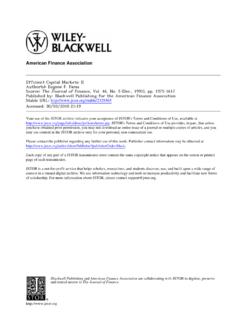

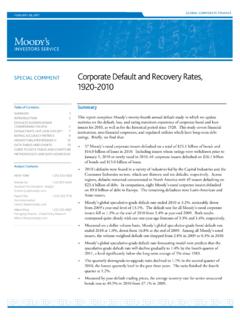






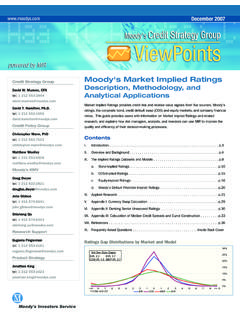
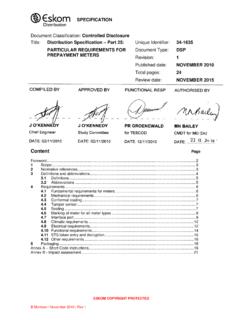

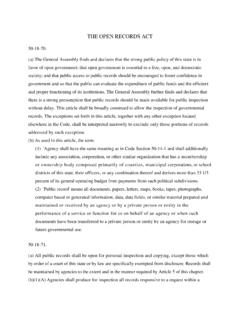
![[SAMPLE SENIOR FACILITIES TERM SHEET] CONFIDENTIAL …](/cache/preview/c/6/a/3/c/f/e/a/thumb-c6a3cfeabfa760b393722f0ba1bc05d7.jpg)

